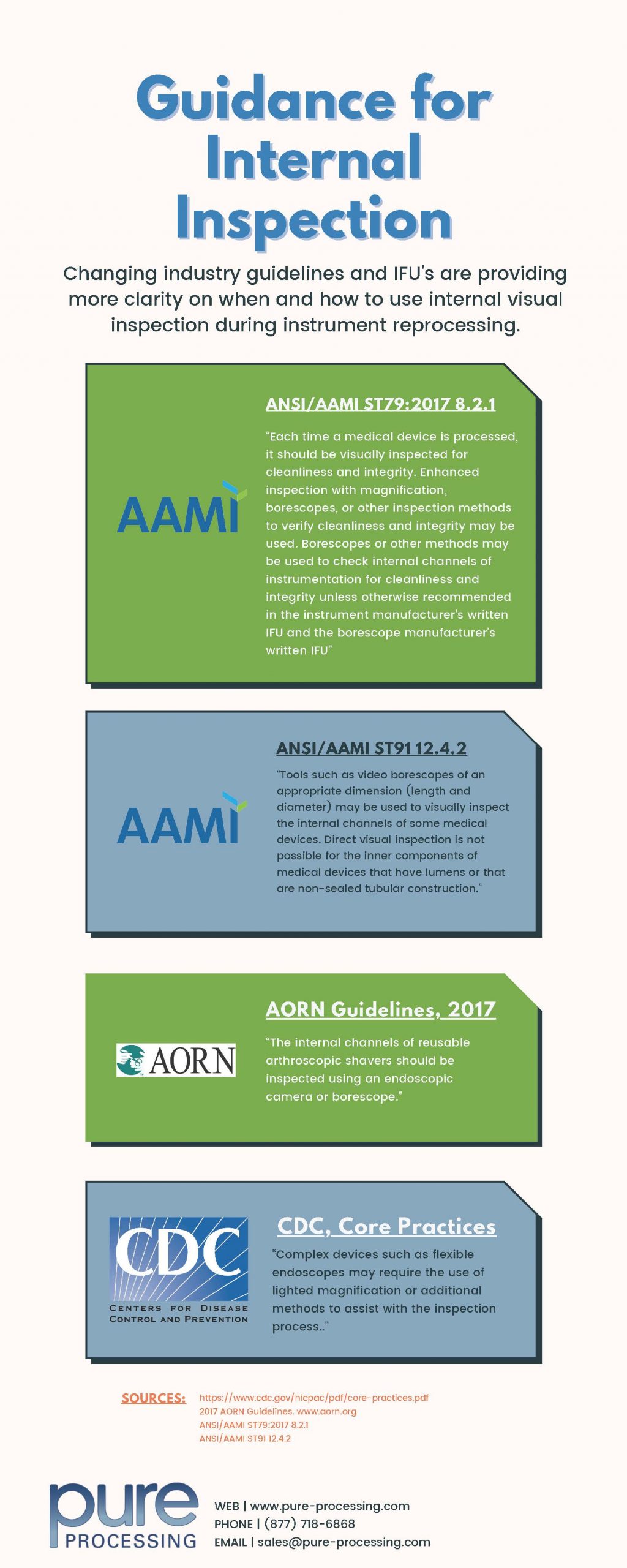
Visual Inspection of Surgical Instrumentation: “We Cannot Clean What we Cannot See”
Instrument reprocessing departments are at the heart of their facilities. Without their crucial work inspecting, cleaning and sterilizing instrumentation, operating rooms and physicians would not be able to provide life-saving procedures to their patients. One of sterile processing’s core functions, visual inspection, is critical in assuring that the instruments delivered are safe for patient use.
“We cannot clean what we cannot see” is unmistakably clear. Instrument reprocessing professionals must be able to visualize their instrumentation fully to deliver high quality cleaning outcomes. External inspection is good for 50% of the device, but what about the other half of your instruments? The internal channels and components of devices are as important and yet more dangerous to leave unchecked.
instrumentation fully to deliver high quality cleaning outcomes. External inspection is good for 50% of the device, but what about the other half of your instruments? The internal channels and components of devices are as important and yet more dangerous to leave unchecked.
Regulatory guidelines and industry recommendations are urging for more internal visual inspection of lumens for this reason. For example, ANSI/AAMI ST79 and ST91 both list guidance on internal inspection:
“The internal channels of a flexible endoscope that are accessible can be inspected by a borescope or other appropriate inspection method. Those conducting the inspection should be trained to identify damage and retained contaminants. Refer to the endoscope manufacturer’s written IFU, maintenance bulletins, and other labeling for direction on what is considered a defective or damaged medical device that cannot be used and must be sent to the service provider for further inspection and potential service activities.”
ANSI/AAMI ST79:2021 7.8.3
“Visual inspection is greatly enhanced with the use of magnification and illumination. Visual inspection can include the use of borescopes to inspect the inner channels/lumens present in many flexible endoscopes.”
ANSI/AAMI ST91 13.5.1
Facilities will also find updated guidance when inspecting complex devices, such as flexible endoscopes or shavers:
“Complex devices such as flexible endoscopes may require the use of lighted magnification or additional methods to assist with the inspection process..”
https://www.cdc.gov/hicpac/pdf/core-practices.pdf
“The internal channels of reusable arthroscopic shavers should be inspected using an endoscopic camera or borescope.”
2017 AORN Guidelines. www.aorn.org
Departments reprocessing any of these complex devices or who are adhering to ANSI/AAMI guidelines should consider enhancing their internal visual inspection procedures with borescope technologies. Borescopes remove the guesswork of internal inspection; they provider the users to the ability to inspect internal channels, capture images, and assist in confirming if a device is patient ready.
When implementing borescope technologies, departments may need to ask themselves the following:
- What am I looking for?
- What does clean look like inside a channel?
- What instruments should I inspect, if not all of them?
- What do I do when I find something inside my channels?
With these questions in mind, department managers can create implementation plans. These plans extend beyond the answers to these initial questions. For example, your technicians may find the following in your instrument channels:
- Debris
- Damage, such as kinks, grooves, and scratches
- Discoloration and staining
- Residual moisture, notably in flexible scope channels
While it can be intimidating to uncover hidden issues, we also “cannot clean what we cannot see”. Internal visual inspection directly impacts patient safety outcomes when these issues are uncovered. Enhancing cleaning outcomes is at the heart of any instrument reprocessing department.
Visual inspection is more than external inspection. While important, it can be further enhanced by also inspecting the other 50% of your instruments through borescope technologies. These technologies uncover many avenues for process and quality improvement, and ultimately, improve the outcomes your department delivers.
Do you have questions on implementing a borescope program into your department, or would like to discuss the potential with an implementation professional? We can help start the conversation. Contact our sales and education team at (877) 718-6868, or by emailing info@pure-processing.com to start the conversation.



